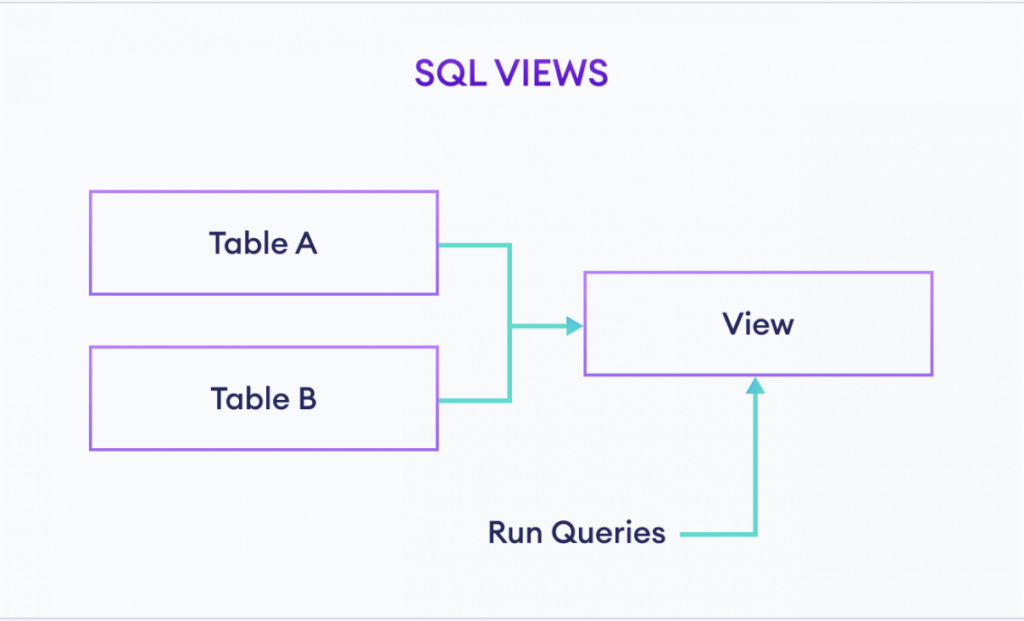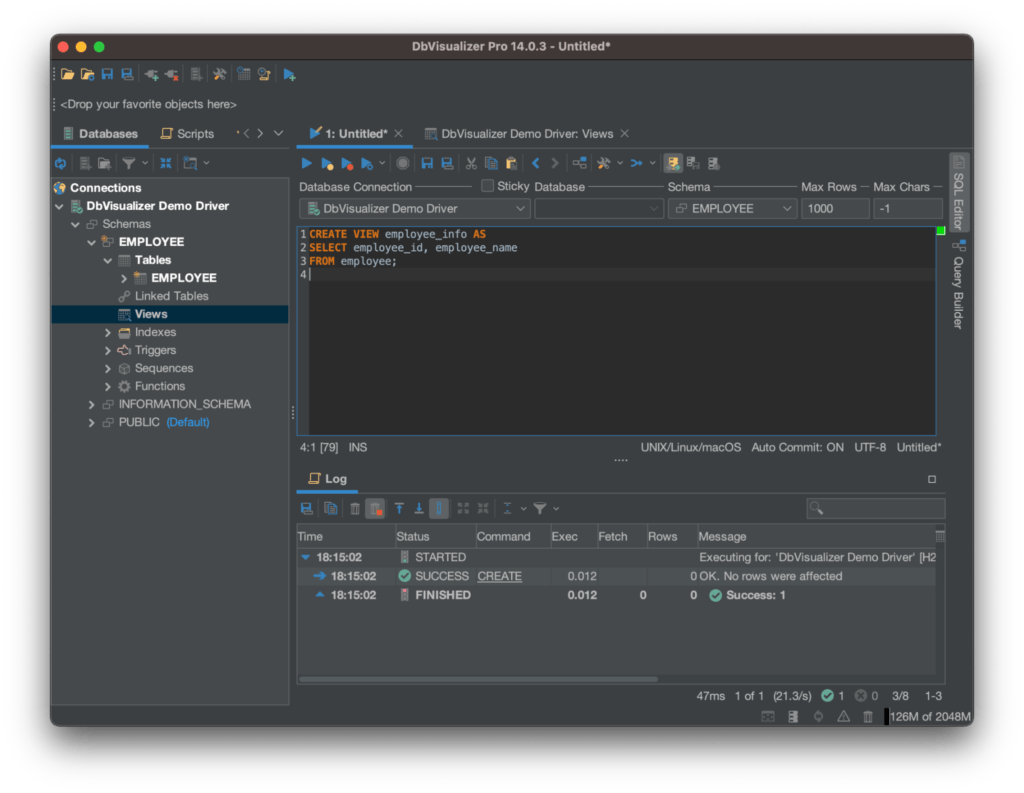intro
A Comprehensive Guide to Efficiently Creating and Managing Views for All Experience Levels.
Introduction
As a developer, have you ever faced challenges finding a specific piece of information in a large set of SQL code? Or have you repeatedly created the same query for different reports? These are common problems that developers often encounter when working with SQL.
SQL views solve these issues by enabling developers to simplify intricate queries and create reusable templates for frequently used queries. However, creating and managing views can be difficult, particularly for beginners.
This article provides a comprehensive guide on efficiently creating and managing SQL views. We will discuss the purpose of views in SQL and why they are essential for managing complex queries. We will also explore the various types of views and how to create them.
We will cover best practices for managing views, including how to update, modify, and delete them. Additionally, we will discuss techniques for optimizing views to improve query performance.
By the end of this article, readers will have a solid understanding of SQL views and how to create and manage them efficiently. Whether you are a beginner or an experienced developer, this guide will provide practical tips and techniques to help streamline your SQL workflow.
Prerequisites
Before diving into the world of SQL views, there are a few prerequisites you need to have. These prerequisites are essential to ensure a comprehensive understanding of the topic and facilitate efficient creation and management of views.
Here are some of the prerequisites for this article:
By having these prerequisites, you will be well-equipped to tackle the complexities of SQL views and efficiently create and manage them.
What are Views in SQL?
SQL views are virtual tables created based on the results of a query. They are defined by a query that extracts data from the tables and displays it in a particular way.

SQL views provide a way to simplify complex queries by creating a reusable template for frequently used queries. They also enable developers to control access to sensitive data by limiting the columns and rows that a user can see.
For developers who work with large and complex data sets, SQL views are an essential tool. They enable data organization and query simplification, making it easier to retrieve the desired information. By efficiently creating and managing SQL views, developers can save time, increase productivity, and maintain the accuracy and consistency of their database.
Creating Views in SQL
To create a view in SQL, you use the CREATE VIEW command followed by the view name and the SELECT statement that defines the view's query. The syntax for creating a view is as follows:
1
CREATE VIEW view_name AS
2
SELECT column1, column2, ...
3
FROM table_name
4
WHERE condition;
Let's consider an example SQL database table called "employee" with columns such as "employee_id", "employee_name", "department", and "salary". With the use of DbVisualizer SQL commander, we can create a new table:

Here is the SQL query used to insert the data into the table:
1
INSERT INTO EMPLOYEE (EMPLOYEE_ID, EMPLOYEE_NAME, DEPARTMENT, SALARY)
2
VALUES (1001, 'John Doe', 'Sales', '50000'),(1002, 'Jane Smith', 'Marketing', '60000'),(1003, 'Bob Johnson', 'Sales', '55000'),(1004, 'Sarah Lee', 'HR', '65000'),(1005, 'Michael Chen', 'Finance', '70000');
Open the database table in a new tab, and navigate to the “Data” tab, you should see the populated table as in the image below:

Suppose we want to create a view that shows only the "employee_id" and "employee_name" columns from the "employee" table. We can create the view using the following SQL command:
1
CREATE VIEW employee_info AS
2
SELECT employee_id, employee_name
3
FROM employee;

This will create a new view called "employee_info" that shows only the "employee_id" and "employee_name" columns from the "employee" table. You can then use this view to query the data instead of the original "employee" table. We can preview the view using the following SQL command:
1
SELECT * FROM employee_info
This query will produce a result like this:

Creating specific views that show only the required data is a powerful feature of SQL. By efficiently creating and managing views in SQL, developers can simplify the database structure and make it easier to retrieve the desired data.
Managing Views in SQL
Managing views in SQL is a crucial aspect of database management. It involves the ability to alter, update, and drop views to ensure that the data displayed is relevant and up-to-date. In this section, we will explore the various SQL commands used to manage views
1
ALTER VIEW view_name AS select_statement;
To update a view, the UPDATE command is used. This command allows you to modify the data displayed by the view by updating the origin table. The syntax for this command is as follows:
1
UPDATE table_name SET column_name = new_value WHERE condition;
To drop a view, the DROP VIEW command is used. This command removes the view from the database. The syntax for this command is as follows:
1
DROP VIEW view_name;
Examples of Managing Views in SQL
Using the table we created in the previous section, let’s alter the view with the following SQL query:
1
CREATE OR REPLACE VIEW employee_info AS
2
SELECT employee_id, employee_name, department
3
FROM employee;
After we alter the view we will get a result like this:

To update the view, we can use the SQL query below:
1
UPDATE employee
2
SET employee_name = 'Zack Jacob'
3
[WHERE employee_id = 1001;
Then we will get a result like this:

To drop the view, we can use the following SQL command:
1
DROP VIEW employee_info;
Optimizing Views in SQL
Views in SQL can be a powerful tool for improving database management and efficiency. By combining views with SQL code, users can create more complex and customized queries. Views can also be used with indexes to improve query performance. In addition, views can be used for security purposes, as they allow users to control access to specific data without granting direct access to the underlying tables.
To efficiently use views in SQL, it is important to consider the following:
1
CREATE VIEW view1 AS SELECT * FROM table1 WHERE condition;
2
CREATE VIEW view2 AS SELECT * FROM table2 WHERE condition;
3
CREATE VIEW view3 AS SELECT * FROM view1 JOIN view2 WHERE condition;
1
CREATE INDEX view_index ON view(column);
1
CREATE VIEW secure_view AS SELECT column1, column2 FROM table WHERE condition;
2
GRANT SELECT ON secure_view TO user;
By implementing these optimization techniques, you will ensure that your SQL views are efficient, secure, and easy to manage.

If you are looking for an easy and powerful SQL client and database manager, then you've got to try DbVisualizer. It connects to nearly any database.
Best Practices for Creating and Managing Views
When working with views in SQL, employing best practices will help ensure the efficient and secure management of the database.
Here are some best practices to consider:
Conclusion
In conclusion, efficiently creating and managing views in SQL is crucial for effective database management, and DbVisualizer can be an essential tool in achieving these goals.. We have explored the syntax and commands for creating, managing, and optimizing views, as well as best practices for naming conventions, documentation, and permissions. By following these best practices, we can ensure that our views are organized, secure, and easily maintained.
Efficiently managing views can also lead to faster query performance and improved database efficiency. We have discussed using indexes and combining views to optimize performance. It is important to consider the specific needs and constraints of your database when implementing these techniques.
Looking forward, there is still much to explore with views in SQL, including more advanced techniques such as materialized views and recursive views. As databases continue to grow in size and complexity, efficient management of views will become increasingly important for successful data management. By implementing the best practices and techniques discussed in this article, we can ensure that our views are optimized, secure, and effective in meeting our database needs.
FAQs(Frequently Asked Questions)
What are SQL views, and why are they important?
SQL views are virtual tables created based on a query's results. They simplify complex queries, create reusable templates, and control access to sensitive data.
How do I create a view in SQL?
To create a view in SQL, use the CREATE VIEW command followed by the view name and the SELECT statement that defines the view's query. Specify the columns and conditions as needed. Example:
1
CREATE VIEW view_name AS
2
SELECT column1, column2, ...
3
FROM table_name
4
WHERE condition;
How do I manage views in SQL?
To manage views, use the ALTER VIEW command to modify a view, the UPDATE command to update the data displayed by a view, and the DROP VIEW command to remove a view.
How can I optimize views in SQL for better performance?
Optimize views by combining them for a more efficient database structure, using indexes on views to improve query execution time, and leveraging views for security. Also, simplify queries and eliminate unnecessary views.


